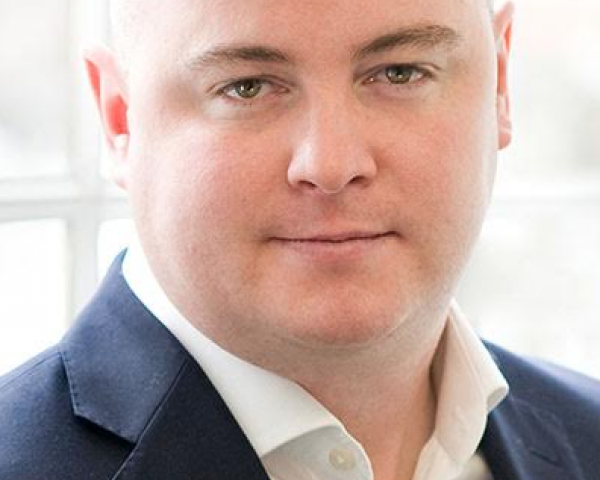To capture the flavor of the pace and magnitude of change during 2016, we wrote a series of blogs where we compared the dramatic shifts in insurance to what happened during the original Italian Renaissance. In reality, the Renaissance was an upheaval. It was a rebuilding of an entire society, characterized by major developments in social and cultural behaviors, science, art, trade and thought. This shouldn’t surprise us, because the word "renaissance" means rebirth. As old patterns disintegrated, an entirely new realm unfolded. The fertile soil of fresh thought provided a period of growth in fields of opportunity. By the end of 2016, we could make a case that it was not only pivotal and groundbreaking, but it was historic on the scale of a Renaissance. At no time in the history of insurance can we find one year that includes this many game-changing events AND a rapid pace of continuing advancement.
Where We Are
The insurance industry is in the midst of profound change fueled by trends that are converging and pushing a sometimes slow-to-adapt industry into the digital age. This seismic shift is creating leaps in innovation and disruption, challenging the traditional business assumptions, operations, processes, products and more of the last 30 to 50 years.
In 2017, we expect to see existing insurers and reinsurers increasingly looking for paths to grow their businesses by capturing the next generation of customers with new engagement models, products and services.
As noted in the report,
What’s Hot in Technology in 2017, by David Smith, chief executive of Global Futures and Foresight,
“The raft of new technologies represents new ways of doing things yet the risk remains that many will simply attempt to overlay digital on old processes and systems. This danger, and the friction that can result from dynamic technology grafted onto static models will result in disruption and challenges. The opportunities that can flow from them, meanwhile, will continue to shape ecosystems and industries and the winners within.”
This is a strong word of caution and warning for the insurance industry because over the last decade or so, many insurers have focused on transforming their businesses by replacing their legacy core systems with modern solutions surrounded by digital and data solutions based on traditional business assumptions. But the generational shift in buyers and rise of new customer expectations does not necessarily align with these transformations. Why? Because many insurers did not anticipate the converging trends and the shift created in expectations and needs of a new generation of buyers. The result is a growing gap between where insurers are and where they need to be for future relevance, growth and success … thereby opening the door to fresh, culture-savvy competition.
See also: How to Transform: From the Outside-In
Where We Need To Be
Insurers, MGAs, reinsurers and others must be alert and responsive to this shift by understanding changes at play and accept that everything we have known about insurance is rapidly moving to a new normal. Underlying this shift is the customer, and in particular the new generation of buyers.
In our
Future Trends: A Seismic Shift Underway report, we outlined the five generations that are foundational to the shift, including the silent generation, baby boomers, Gen X, millennials and the emerging Gen Z. Our consumer research,
The Rise of the New Insurance Consumer: Shifting Views and Expectations – Is Your Business Ready for Them?, dives into this shift with more insights on the move to simplicity, transparency, engagement and digital, expected by millennials and Gen Z but also highlights that Gen X is often dramatically aligning with millennials and Gen Z.
The implications for insurers are enormous. Why? Because insurers’ business models, processes, products, services and systems have all been built for and around the Silent and Baby Boomer generations who have been the primary buyers of insurance during the last 60-plus years. Gen X turned 18 in the mid-1980s and is entering their peak earning years and adapting to new technologies and digital. The millennials turned 18 in the early 2000s and are the first generation to grow up surrounded by digital, and Gen Z was born with digital technology. Furthermore, these two generations highlight behavior and expectation shifts in vehicle ownership, movement in jobs, embracement of the shared economy and much more, which have a huge impact on insurance needs and expectations.
New entrants have been the first to embrace this shift … Trov, Slice Labs, Lemonade, Haven Life, Quilt and more, to bring innovative business models, products, channels, process and solutions to capture this market. This has inspired existing insurance companies like Shelter General Insurance, with the launch of Say Insurance, to Berkshire Hathaway’s launch of CoverYourBusiness, to Metromile’s move from an MGA to a full insurer and more. Moves like these are necessary to compete in a fast changing market inspired by insurtech.
As evidenced by the large amount of activity in the insurtech space, many think there is a better way for insurance to work, and they are acting on this belief and getting significant capital to make it a reality. In so doing, they have the opportunity to steal substantial market share from those companies that don’t ask themselves and act on the same questions.
This is where most insurers would like to be — modern, competitive, and built-to-capture business.
How Do We Get There?
Is there a way to rapidly and “safely” transform, using our current business as the engine to drive to a new business model?
Getting to the competitive forefront requires companies to rethink their business model and realign it with the customer needs and the expectations of those who will be their customers for the next 10 to 20 years, not those from the past 10 to 20 years. It requires a new business paradigm in how we define and think about insurance, embracing business components that work in the new context of people, technology and market boundaries and discarding the pieces that are outmoded or irrelevant.
Acknowledging the need, however, doesn’t offer a concrete platform for transformation to a new future … a New Normal. A plan is needed, and, in most cases, the plan must be practical. Most organizations can’t simply flip off one switch (traditional business model and products administered on traditional systems) and flip another on (new business model and products on modern, flexible systems that will handle digital integration and better data acquisition and analysis). So, the shift will require steps. Those steps will operate as both a bridge and a proving ground, while the traditional system is still operational as a firm foundation while the new foundation is being constructed.
Majesco encourages insurers to think in terms of a three-pronged modernization.
- Keep and grow the existing business, while transforming and building the new business.
This is crucial. Marketing and distribution shouldn’t pull back from traditional business in anticipation of the launch of new business models, new products or new channels. Insurers shouldn’t stop pushing for more business of a particular type until or unless new products clearly nudge them out of existence. The current business is funding the future and needs to be kept running efficiently and effectively as the market shifts.
- Optimize the existing business while building the new business.
A customer engagement improvement is ALWAYS an improvement. If your teams have been working toward placing digital front ends on the traditional business to engage customers, don’t stop in the middle of the bridge. Any process that can be optimized on the traditional side will help to maximize the existing business, reduce the cost of doing business and provide a bridge from the past to the future while beginning to enable realignment of resources and investment into the new business. These are very often the incremental changes that will also gently shift your customer base through new ways of doing business.
- Develop a new business model for a new generation of buyers.
Some insurers have made the mistake of envisioning their digital front end as their big leap into the future, not realizing that they have only just touched the new landscape. They need a strategy with a plan for a new business model that supports simultaneous leaps forward that will create new customer engagement experiences underpinned by innovative products and services that will create growth, competitive differentiation and success in a fast-changing market dynamic.
See also: 5 Topics to Add to Your List for 2017
These three focal points comprise “the new normal” for insurers. Keep, grow and optimize the existing business during the creation of the business that fits tomorrow’s shift-on-the-demand insurance culture. A new generation of insurance buyers with new needs and expectations creates both a challenge and an opportunity. There is no clear path or destination. The time for plans, preparation and execution is now — recognizing that the customer is in control. Those who recognize and rapidly respond to this shift will thrive in an increasingly competitive industry to become the new leaders of a re-imagined insurance business that aligns to a rapidly growing, millennial, Gen Z and Gen X customer base.
Insurance companies must stop
talking about the opportunities and being digital, and start
doing something about it by using the disruption and change as a catalyst for “real change.” We are entering a new age of insurance. These efforts will carry insurers into that new age, where they will be prepared to capture the revenue growth potential presented by the rise of the new insurance customer.












